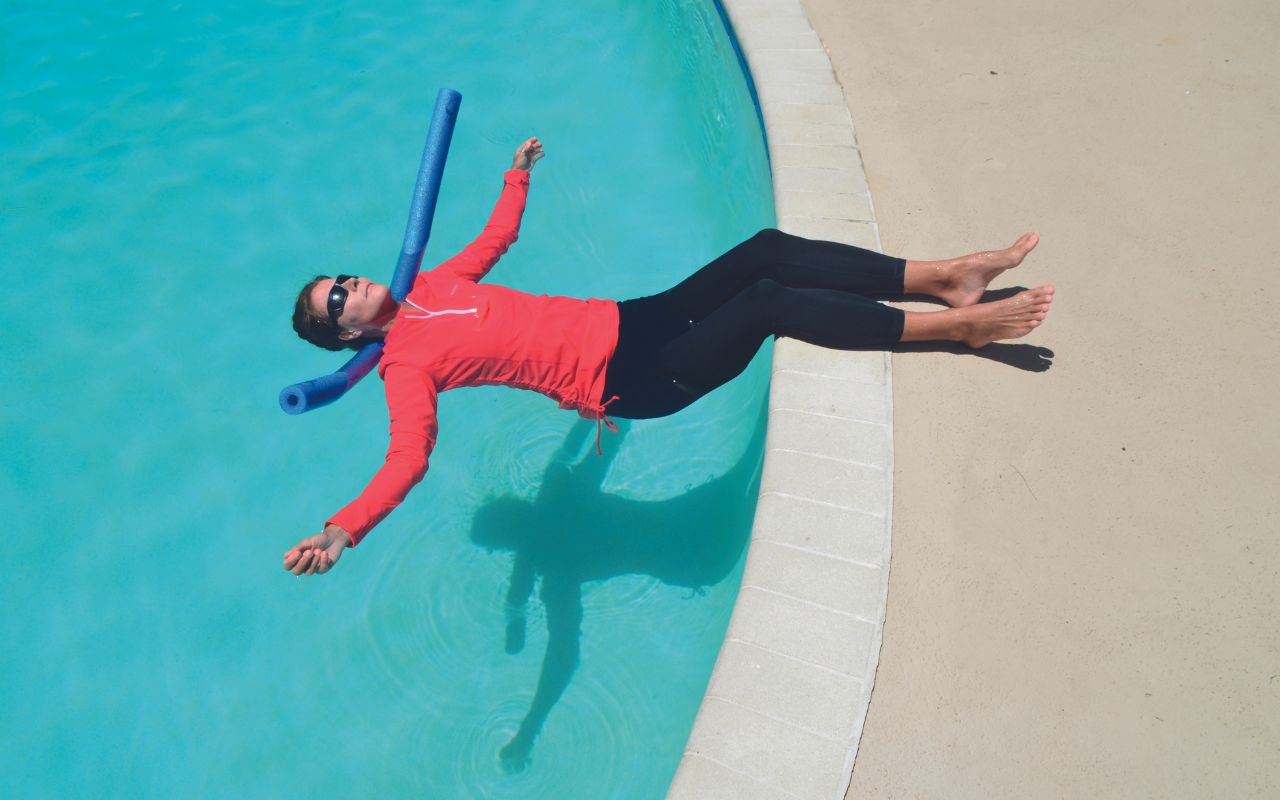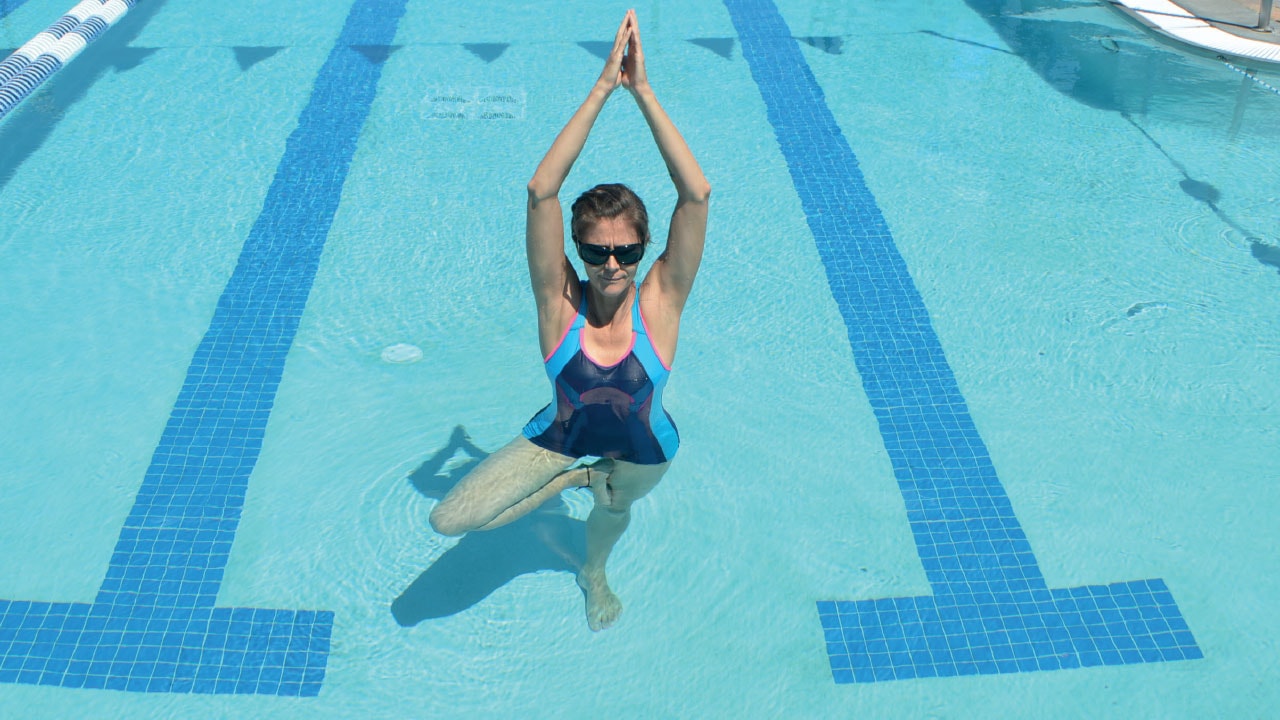What exactly is aqua yoga or water yoga? At its simplest, aqua yoga is moving your yoga practice into the water. But by taking advantage of the medium of water, it can be so much more than that.
In land yoga, your poses are confined to the mat, and your movements happen parallel to the mat’s edges. In the pool, 360º of movement are available. Warrior I can become a curtsy, providing valuable proprioceptive feedback by crossing the midline behind you. Balance postures can include movement on the water’s surface in the transverse plane, which gets neglected on the mat.
Being in the water can transform how you think about applying yoga philosophy to your practice. The properties of water can flip how you feel about ahimsa and tapas, for example. In the water, simply standing in mountain pose is hard because of the movement of the water around you. Yet the water supports you. When standing at the ideal water depth for aqua yoga, mid-chest height, you offload approximately 70% of your weight. That makes Warrior III pose less tiring for your legs.
If you want to recreate the tapas element of Warrior III, you can use the viscosity of the water. Water is denser than air. It’s not like you’re doing yoga in a vat of honey, but moving any limb dynamically through the water in a posture is harder than moving the limb on land. If, while in Warrior III, you move your arms straight down to flank your standing leg, then rotate your palms face up and bring your arms back to the water’s surface, it’s a challenge. Doing it with straight arms is more challenging than bending your elbows.

Health benefits
Aqua yoga is also accessible to more people. I live with multiple kinds of arthritis, and my journey with that diagnosis is why I teach aqua yoga. I want to help people who live with the symptoms of arthritis be more comfortable in their bodies. In mat yoga, many people have to give up a practice or don’t even start because they have to get on and off the ground or bear weight on their knees or hands. Since aqua yoga is done standing, or with buoyant equipment for seated postures, none of those are an issue.
Of course, much of the difference is due to the medium of water. Immersion has distinct physiological effects on your body. Hydrostatic pressure is the inward squeezing force you feel when you get in the water as if you slipped inside a warm wet sock.
Hydrostatic pressure makes breathing more effort, so your pranayama, or breath work, practices are more intense. Also, your blood cycles through your kidneys faster. That’s why everyone has to use the bathroom after being in the pool. Being in the water also reduces pain, lowers your blood pressure, and reduces swelling, all adding to the potential benefits you gain through an aqua yoga practice.
Mindful practice
An aquatic environment also enhances your pratyahara and dharana practices. Hydrostatic pressure dampens your nervous system responses, which facilitate drawing your awareness inward. Increasing your inner concentration helps your focus and transition into your meditation. Pools can be noisy, distracting places. If you can concentrate and meditate there, you can do it anywhere! Aqua yoga philosophy includes applied mindfulness skills that you can use to navigate the challenges of your daily life. Taking your yoga practice out of the pool (or off the mat) and using the skills to improve your daily life is truly the overall point.
Like on land, an aqua yoga practice concludes with a meditation. Though, instead of lying on a concrete floor for a savasana practice, you can bliss out with a floating meditation. Using pool noodles to support you, you’re fully suspended and buoyed to let your nervous system truly relax.
The number one question people have about aqua yoga is how do you do down dog? While you can do inversions like handstand or peacock pose the same as on land, you can picture the challenges. Instead, aqua down dog is like a wide-legged forward fold.
Try aqua yoga for yourself. Take your yoga practice to the pool or on holiday this summer. Experiment with the differences between practicing yoga surrounded by water instead of air. You’ll have a great time and learn something new about yourself and your yoga
practice.

Christa Fairbrother, ERYT 200/500, ATRIC, AFP, AFAP, is an internationally recognised aqua yoga coach and trainer who helps people and pros worldwide learn to practice and teach aqua yoga. She is also the author of Water Yoga (Singing Dragon, 2022)





